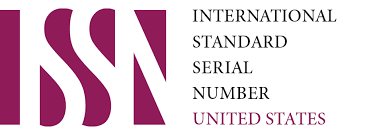The challenges faced by female expatriates in a workplace
Keywords:
women in the workplace, gender discrimination, sexual harassmentAbstract
The number of expatriate women around the world has been hindering compared to males. It is also found that higher levels of stress, anxiety, and workplace discrimination, such as sexual harassment, are experienced more by women compared to men. Therefore, it is important to offer possible interventions for creating a safe and friendly working environment for workers of both genders by examining the root causes of such cases. The goal of this paper is to analyze prior studies to identify factors contributing to challenges faced by female expatriates in the workplace
References
Adler, N. J. (1984). Women do not want international careers: and other myths about international management. Organizational Dynamics, 13(2), pp. 66–79.
Adler, N. J. (1987). Pacific basin managers: a Gaijin, not a woman. Human Resource Management, 26(2), pp. 169–191.
Bader, B. & Schuster, T. (2015). Expatriate social networks in terrorism-endangered countries: an empirical analysis in Afghanistan, India, Pakistan, and Saudi Arabia. Journal of International Management, 21(1), pp. 63-77.
Bhaskar-Shrinivas, P., Harrison, D. A., Shaffer, M. A. & Luk, D. M. (2005). Input-based and time-based models of international adjustment: meta-analytic evidence and theoretical extensions. Academy of Management Journal, 48(2), pp. 257–281.
Brookfield Global Relocation Services (2016). Global Mobility Trends Survey. Brookfield Global Relocation Services, New York, NY.
Cox, T.H. & Blake, S. (1991). Managing cultural diversity: Implications for organizational competitiveness. Academy of Management Perspectives, 5(3), 45-56.
Hutchings, K. & Michailova, S. (2017). Female expatriates: Towards a more inclusive view, in McNulty, Y. and Selmer, J. (Eds.), Research Handbook of Expatriates, Edward Elgar, Northampton, MA, 241–260.
Lazarus, R.S. & Folkman, S. (1984). Stress, appraisal, and coping. Springer publishing company.
Nishii, L. H. (2013). The benefits of climate for inclusion for gender-diverse groups. Academy of Management Journal, 56(6), 1754–1774.
OECD Development Centre (2014). SIGI social institutions and gender index: 2014 synthesis report, Paris, OECD.
Peters, L.H., O’Connor, E.J. & Rudolf, C.J. (1980). The behavioral and affective consequences of performance-relevant situational variables. Organizational Behavior and Human Performance, 25(1), 79-96.
Stalker, B. & Mavin, S. (2011). Learning and development experiences of self-initiated expatriate women in the United Arab Emirates. Human Resource Development International, 14(3), 273–290.
Stoermer, S., Bader, A. K. & Froese, F. J. (2016). Culture matters: The influence of national culture on inclusion climate. Cross Cultural and Strategic Management, 23(2), 287–305.
Traavik, L. & Richardsen, A. (2010). Career success for international professional women in the land of the equal? Evidence from Norway. The International Journal of Human Resource Management, 21(15), 2798–2812.
Vander Boon, M. (2003), “Women in international management: An international perspective on women’s ways of leadership. Women in Management Review, 18(3), 132–146.
Downloads
Published
Issue
Section
License

This work is licensed under a Creative Commons Attribution-NonCommercial 4.0 International License.
User Rights
Under the Creative Commons Attribution-NonCommercial 4.0 International (CC-BY-NC), the author (s) and users are free to share (copy, distribute and transmit the contribution).
Rights of Authors
Authors retain the following rights:
1. Copyright and other proprietary rights relating to the article, such as patent rights,
2. the right to use the substance of the article in future works, including lectures and books,
3. the right to reproduce the article for own purposes, provided the copies are not offered for sale,
4. the right to self-archive the article.













